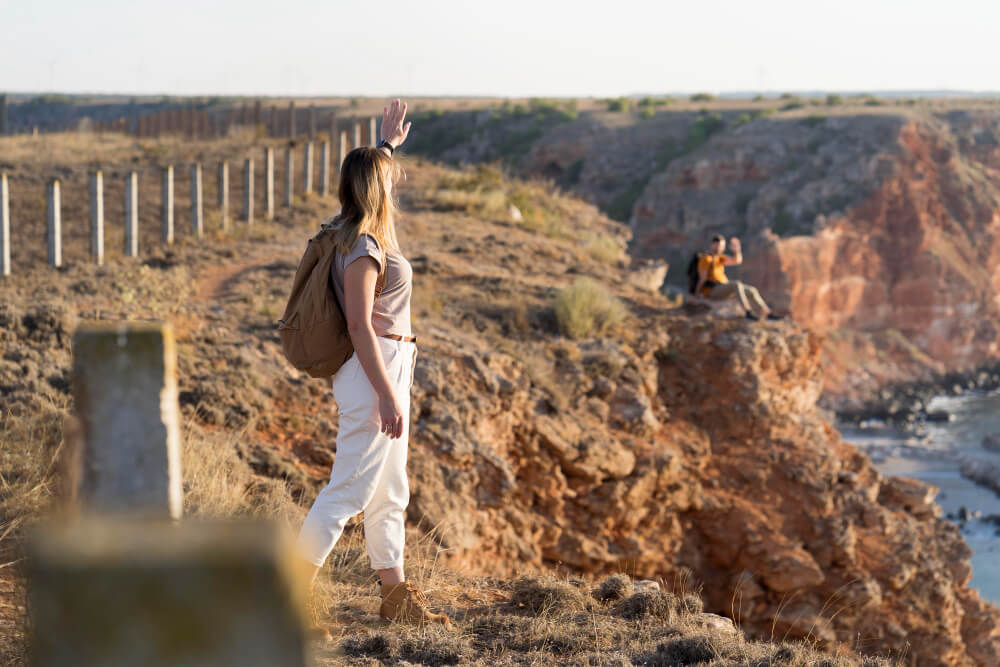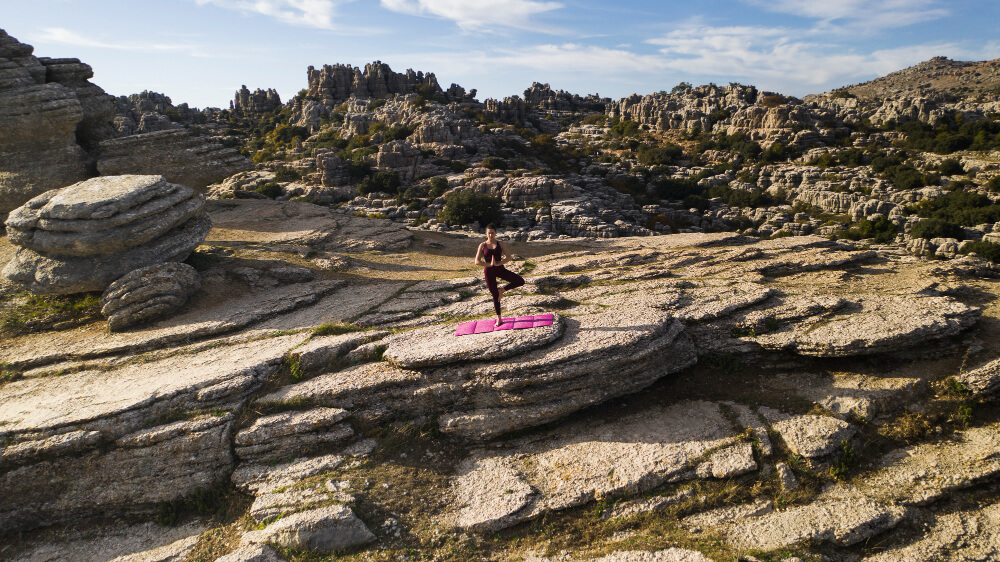As interest in sustainable travel continues to rise, exploring Indigenous heritage sites in Western Australia offers a unique opportunity to connect with the rich culture and history of the land.
By delving into these sites, visitors gain a deeper understanding of the traditional owners of the land and their connection to the environment, ultimately fostering a sense of respect and appreciation for Indigenous culture.

One of the most striking impacts of visiting Indigenous heritage sites in Western Australia is witnessing the incredible artistry and craftsmanship displayed in artworks and artefacts.
From ancient rock art to intricately woven baskets, these sites showcase the creativity and ingenuity of Indigenous peoples, preserving their cultural heritage for future generations to appreciate.
In the upcoming sections of this article, we will delve into the significance of specific Indigenous heritage sites in Western Australia, highlighting their historical and cultural importance.
From the sacred sites of the Kimberley region to the stunning landscapes of the Pilbara, each location offers a unique perspective on Indigenous history and traditions.
By exploring these sites, visitors can gain a deeper appreciation for the rich tapestry of Indigenous culture in Western Australia.
Research and Respect
Before exploring any Indigenous heritage site in Western Australia, it is important to conduct thorough research on the significance of the site and the cultural protocols that must be observed.
Understanding the history and traditions of the Indigenous community associated with the site will help you navigate the area with respect and avoid unintentional disrespect or harm.
Remember that these sites are sacred and hold great cultural value, so it is essential to act with reverence and sensitivity.
Seek Permission
In many cases, access to Indigenous heritage sites in Western Australia requires obtaining permission from the local community or traditional owners.
It is crucial to reach out to the relevant authorities or Indigenous groups to seek their approval before visiting the site.
This shows a genuine commitment to respecting their land and culture.
By following protocol and showing respect for Indigenous ownership, you contribute to reconciliation and strengthen relationships with the local community.
Leave No Trace
When exploring Indigenous heritage sites in Western Australia, it is vital to practice Leave No Trace principles to preserve the integrity of the site and minimise environmental impact.
Respect the delicate ecosystems and cultural artefacts by not disturbing or removing any objects from the area.
Take all your waste with you and leave the site exactly as you found it. By practising responsible tourism, you help protect these sacred places for future generations to enjoy.
Engage with Local Guides
Consider hiring a local guide or joining a tour led by Indigenous custodians when exploring heritage sites in Western Australia.
These guides offer valuable insights, storytelling, and cultural context that enhance your experience and provide a deeper understanding of the site’s significance.
By supporting Indigenous tourism initiatives, you contribute to the economic empowerment of local communities and promote the preservation of their cultural heritage.
Reflect and Educate
After visiting an Indigenous heritage site in Western Australia, take the time to reflect on your experience and educate yourself further about the history and culture of the local Indigenous community.
Share your newfound knowledge with others to raise awareness about the importance of preserving these heritage sites and honouring Indigenous traditions.
By becoming an advocate for Indigenous heritage protection, you play a role in promoting cultural understanding and respecting the rights of Australia’s First Nations people.
Pros of Exploring Indigenous Heritage Sites in Western Australia
Exploring Indigenous heritage sites in Western Australia offers a unique opportunity to learn about the rich history and culture of the Aboriginal people.
These sites provide valuable insights into the traditions, beliefs, and practices of Australia’s First Nations people.
Visiting Indigenous heritage sites allows visitors to connect with the land and gain a deeper appreciation for the natural environment.
Many of these sites are located in stunning natural settings, providing a peaceful and serene experience for those who visit.
Exploring Indigenous heritage sites can also help to promote cultural awareness and understanding among visitors.
By learning about the history and traditions of the Aboriginal people, visitors can gain a greater respect for Indigenous culture and heritage.
Visiting these sites can also support the local Indigenous communities and help to preserve their cultural heritage.
Many Indigenous heritage sites are managed by Aboriginal groups, and visiting these sites can provide much-needed economic opportunities for these communities.
Overall, exploring Indigenous heritage sites in Western Australia offers a unique and meaningful experience for those who are interested in learning about Australia’s rich Indigenous history and culture.
Cons of Exploring Indigenous Heritage Sites in Western Australia
Disrespecting Sacred Sites
Exploring Indigenous heritage sites without proper guidance or permission can lead to disrespecting sacred places.
Without understanding the significance of these sites, visitors may unknowingly engage in behaviour that is offensive or damaging to the cultural heritage of Indigenous communities.
Environmental Impact
Increased tourism to Indigenous heritage sites can have a negative impact on the environment.
The influx of visitors can result in littering, habitat destruction, and erosion, affecting the natural beauty and integrity of these sites.
Exploitation of Indigenous Culture
Commercialization of Indigenous heritage sites can lead to the exploitation of traditional culture for profit.
This can result in unethical practices such as selling sacred artefacts or misrepresenting the history and significance of these sites.
Displacement of Indigenous Communities
Increased tourism and development around Indigenous heritage sites can lead to the displacement of Indigenous communities.
Rising property values, increased noise pollution, and loss of access to resources can force these communities to move away from their ancestral lands.
Lack of Education and Awareness
Visitors to Indigenous heritage sites may lack proper education and awareness about the history, culture, and significance of these sites.
This can lead to misunderstandings, misinterpretations, and perpetuation of stereotypes, ultimately hindering the preservation and appreciation of Indigenous heritage.

Conclusion
exploring Indigenous heritage sites in Western Australia presents both opportunities and challenges for visitors seeking to connect with the rich culture and history of Australia’s First Nations people.
These sites offer invaluable insights into traditions, artistry, and the deep connection Indigenous communities have with the land. However, to truly appreciate and respect these sites, it’s essential for visitors to approach them with sensitivity, understanding, and a commitment to responsible tourism.
The pros of exploring Indigenous heritage sites highlight the potential for cultural enrichment, environmental appreciation, and support for local Indigenous communities.
Visitors have the chance to learn about and honour the diverse traditions and beliefs of Australia’s First Nations while contributing to the economic empowerment of Indigenous groups through tourism.
Conversely, the cons underscore the risks associated with irresponsible behaviour, environmental degradation, cultural exploitation, and the potential displacement of Indigenous communities.
Without proper education, awareness, and respect for cultural protocols, visitors may inadvertently harm the very sites they seek to admire and preserve.
To navigate these complexities, it is crucial for visitors to engage in thorough research, seek permission, practice Leave No Trace principles, and engage with local Indigenous guides to gain a deeper understanding of the sites they visit.
By reflecting on their experiences and advocating for Indigenous heritage protection, visitors can play a vital role in fostering cultural understanding, respect, and preservation for future generations to appreciate and cherish.
Frequently Asked Questions,
What constitutes an Aboriginal site in Western Australia?
Aboriginal sites in Western Australia are defined by Section 5 of the Aboriginal Heritage Act 1972 and include places of importance and significance to Aboriginal people, such as rock art, ancient caves, burial sites, waterways, ceremonial sites, and scar trees
How are Aboriginal sites protected in Western Australia?
It has been illegal to harm Aboriginal heritage in Western Australia for over 50 years.
The Aboriginal Heritage Act 1972 protects all Aboriginal sites, objects, and ancestral remains in the state, whether registered or not, with the Aboriginal Cultural Heritage Committee making recommendations to the Minister for Aboriginal Affairs on Section 18 Notices
Who grants approvals under Section 18 of the Aboriginal Heritage Act WA?
Requests for consent under Section 18 are sent to the Aboriginal Cultural Material Committee (ACMC), which assesses the importance and cultural significance of a site and submits a notice to the Minister with a written recommendation on whether consent should be granted for the intended land use
What is the significance of Section 18 in the Aboriginal Heritage Act WA?
Section 18 of the Act allows landowners to apply for consent to proceed with activities that may cause destruction, damage, or alterations to Aboriginal sites.
An approved Section 18 provides legal consent for such activities, removing the criminality associated with a breach of Section 17 of the Act
How can individuals explore and learn about Indigenous heritage sites in Western Australia?
There are various Aboriginal cultural tours and experiences available in Western Australia that offer insights into the rich cultural heritage of the region.
For example, tours like the Go Cultural Aboriginal Tours in Perth, Coastal Walks in Cape Leveque, Ngurrangga Tours in Pilbara, Koomal Dreaming in Margaret River, and Wula Gura Nyinda Eco Cultural Adventures in Shark Bay provide opportunities to engage with Indigenous culture and heritage